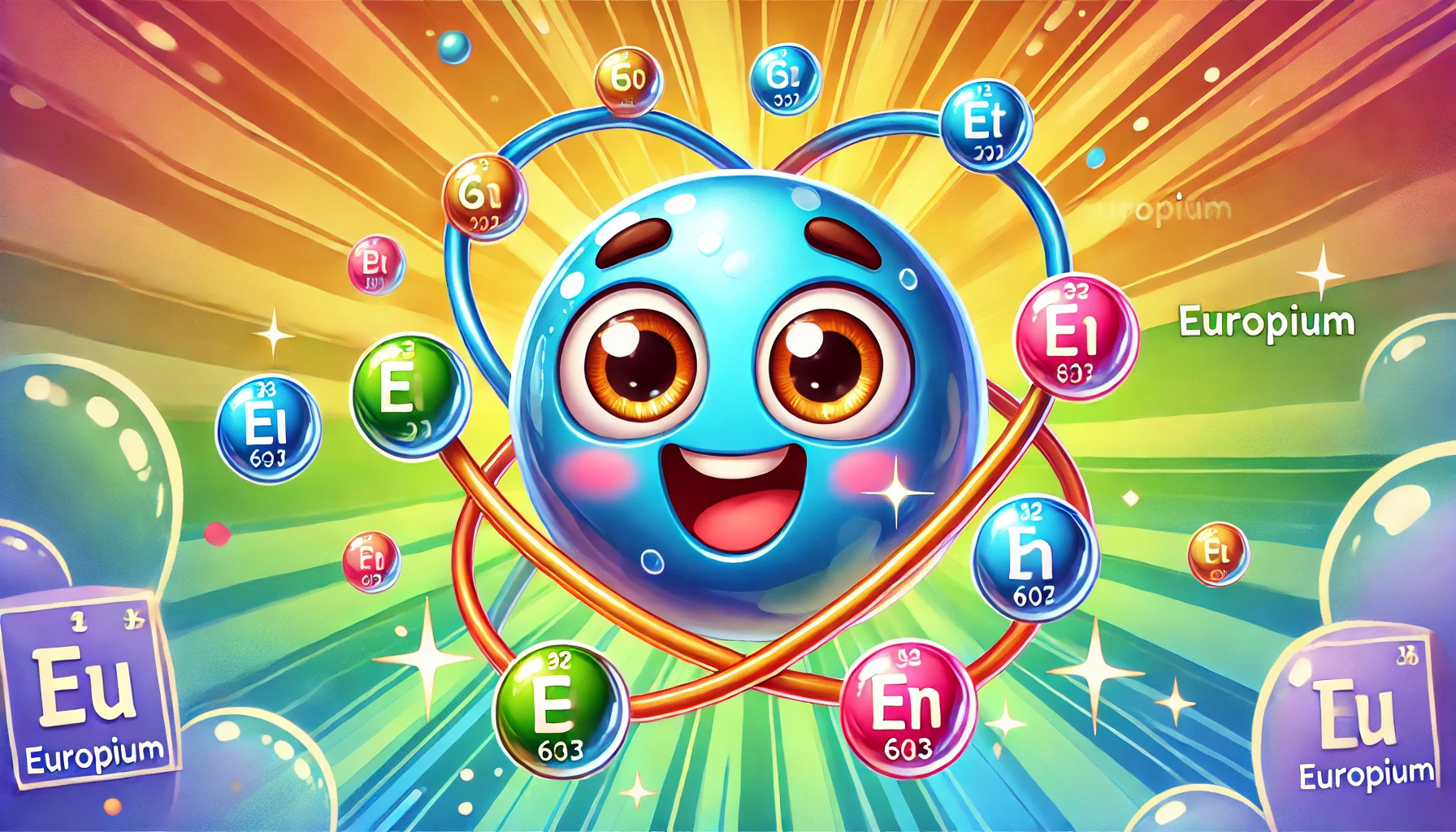Understanding Europium: Properties, Uses, Health Risks, and Fascinating Facts
Understanding Europium: Properties, Uses, Health Risks, and Fascinating Facts
Table of Contents
- Introduction to Europium
- Properties of Europium
- Uses of Europium
- Health Risks of Europium Exposure
- Interesting Facts about Europium
- Environmental Impact of Europium
- Conclusion
- References
Understanding Europium: Properties, Uses, Health Risks, and Fascinating Facts
Introduction to Europium Europium is a chemical element with the symbol Eu and atomic number 63. It is a rare earth element that belongs to the lanthanide series. Known for its distinctive applications in technology and industry, europium is a valuable material with unique properties. This article explores the properties, uses, health risks, and interesting facts associated with europium, providing a comprehensive understanding of this important element.
Properties of Europium Europium is characterized by several distinct physical and chemical properties.
Physical Properties
- Appearance: Europium is a silvery-white metal that is quite soft and ductile.
- Density: The density of europium is 5.24 g/cm³.
- Melting Point: Europium melts at 822°C (1,512°F).
- Boiling Point: The boiling point of europium is 1,527°C (2,781°F).
Chemical Properties
- Reactivity: Europium is highly reactive, especially with oxygen and water, and it rapidly oxidizes in air, forming a layer of europium oxide.
- Compounds: Europium forms various compounds, such as europium oxide (Eu₂O₃), europium chloride (EuCl₃), and europium nitrate (Eu(NO₃)₃).
Uses of Europium Europium has several applications across different industries due to its unique properties.
Phosphors and Lighting
- Red and Blue Phosphors: Europium is used in phosphors for color television screens, computer monitors, and fluorescent lamps to produce red and blue colors.
- LEDs: Europium-doped materials are used in light-emitting diodes (LEDs) for efficient and bright illumination.
Nuclear Reactors
- Neutron Absorber: Europium is used as a neutron absorber in nuclear reactors, helping to control the rate of fission and ensure safe operation.
Medical Applications
- Fluorescent Probes: Europium compounds are used in biochemistry and medical diagnostics as fluorescent probes for detecting various biological substances.
Research and Development
- Spectroscopy: Europium is used in spectroscopy for calibrating instruments and studying the properties of rare earth elements.
Health Risks of Europium Exposure Europium is generally considered to have low toxicity, but there are some health risks associated with exposure to europium compounds and dust.
Inhalation and Ingestion
- Respiratory Irritation: Inhalation of europium dust can cause respiratory irritation, coughing, and shortness of breath.
- Gastrointestinal Issues: Ingestion of europium compounds can cause gastrointestinal irritation, including nausea and vomiting.
Skin and Eye Contact
- Skin Irritation: Direct contact with europium compounds can cause skin irritation and dermatitis.
- Eye Irritation: Exposure to europium dust or solutions can cause eye irritation and potential damage.
Interesting Facts about Europium Europium has several intriguing aspects that make it an interesting element.
Discovery
- Discovered in 1901: Europium was discovered by French chemist Eugène-Antole Demarçay in 1901. It was named after the continent of Europe.
Unique Properties
- Strong Fluorescence: Europium is known for its strong fluorescence, which makes it valuable in various lighting and display technologies.
Isotopes
- Stable Isotopes: Europium has two naturally occurring isotopes, europium-151 and europium-153. Europium-153 is the more abundant isotope.
Environmental Impact of Europium Europium is not known to have significant environmental impacts, but its extraction and use should still be managed responsibly.
Natural Occurrence
- Abundance: Europium is relatively scarce in the Earth’s crust and is typically found in minerals such as monazite and bastnäsite.
- Mining: Extraction of europium from these minerals must be done with care to avoid environmental damage.
Industrial Waste
- Waste Management: Proper disposal of europium-containing industrial waste is crucial to prevent environmental contamination.
Conclusion Understanding europium, its properties, uses, health risks, and interesting facts provides valuable insight into this versatile element. While europium is generally safe with low toxicity, appropriate safety measures should be taken when handling europium compounds and dust. Its applications in lighting, nuclear reactors, medicine, and research highlight its importance in modern technology and industry.

<ⓒ WizardMedics (wizardmedics.com)>


